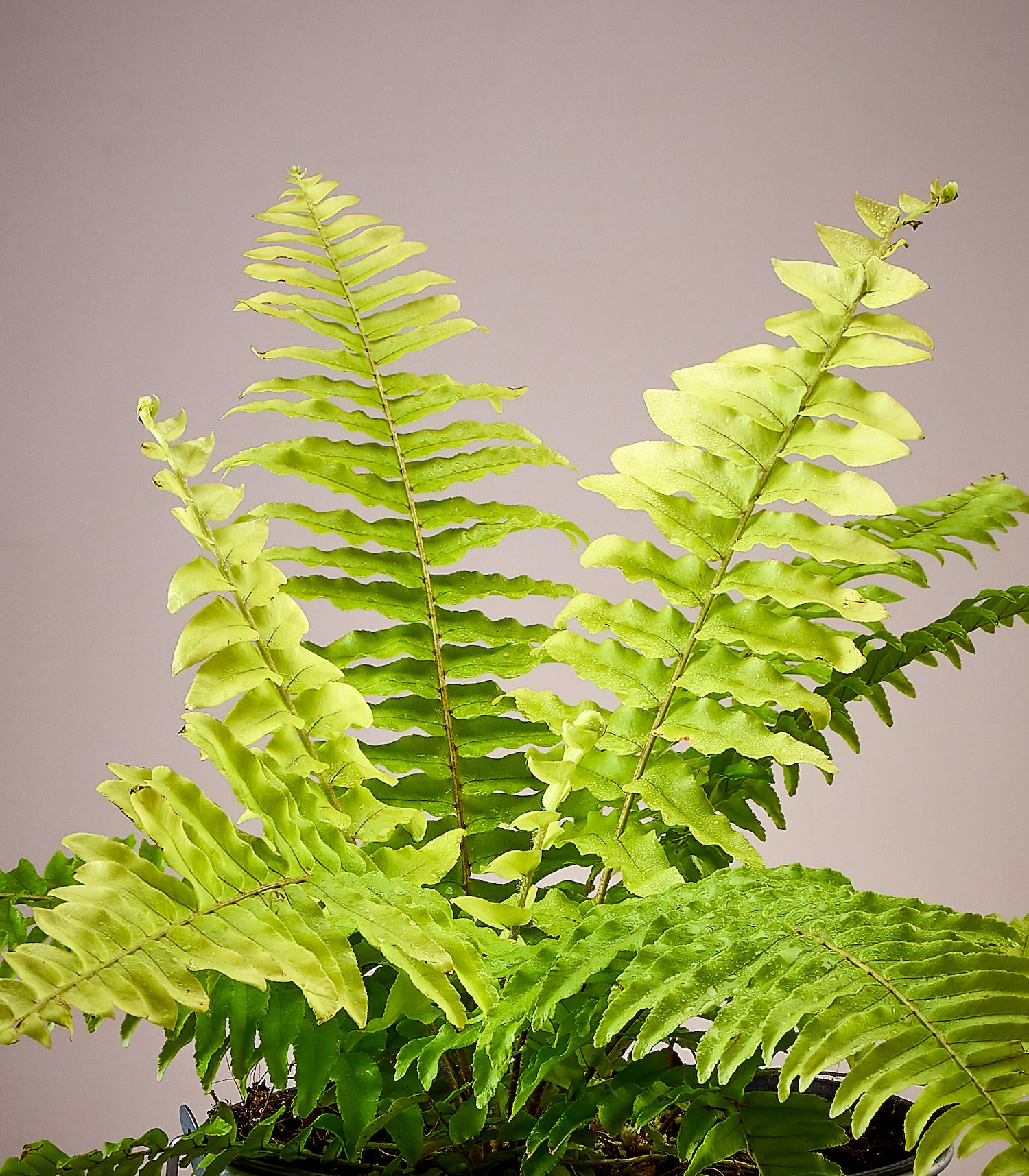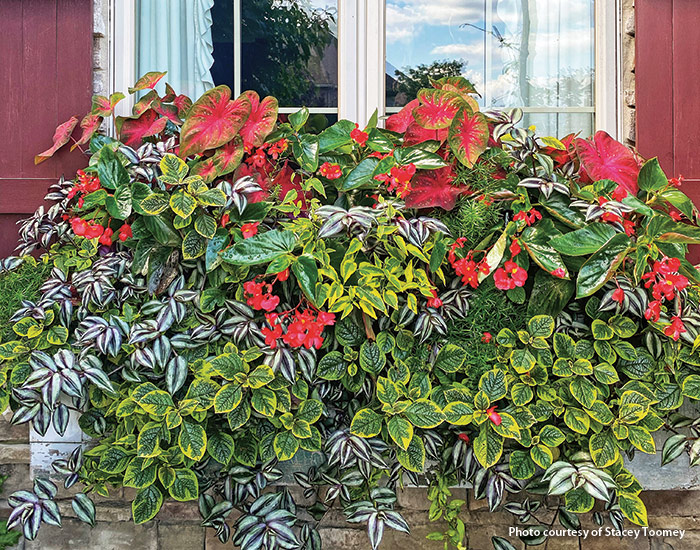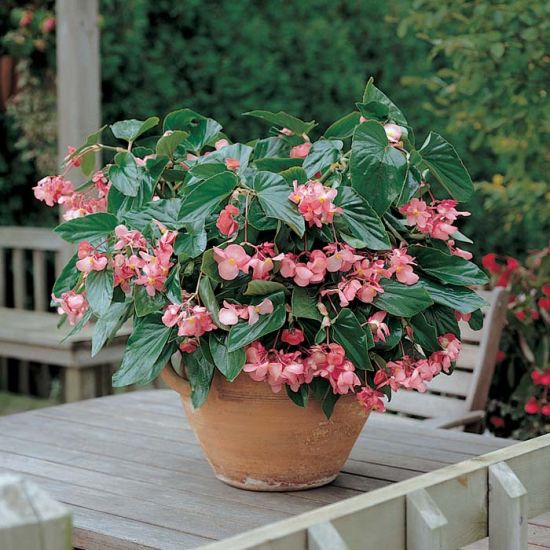Dragon Wing Begonias: The Showstoppers Of Your Container Garden
Dragon Wing Begonias: The ShowStoppers of Your Container Garden
Dragon Wing begonias are a type of cane begonia that are known for their large, glossy leaves and cascading clusters of flowers. They are a popular choice for container gardens because they are easy to care for and can tolerate a wide range of conditions.
In this blog post, we will discuss the following:
- What are dragon wing begonias?
- How to care for dragon wing begonias
- How to plant dragon wing begonias in containers
- How to use dragon wing begonias in your garden
What are dragon wing begonias?
Dragon wing begonias are a type of cane begonia that are native to South America. They are characterized by their large, glossy leaves that can grow up to 5 inches long. The leaves are typically dark green, but there are also varieties with variegated leaves.
The flowers of dragon wing begonias are small and trumpet-shaped. They are typically white, pink, or red, and they bloom in clusters that cascade down the stem.
How to care for dragon wing begonias
Dragon wing begonias are relatively easy to care for. They prefer full sun to partial shade, and they need well-drained soil. They should be watered regularly, but they should not be allowed to sit in water.
Dragon wing begonias are also susceptible to mealybugs and scale insects. If you see any pests on your plants, you can treat them with insecticidal soap or neem oil.
How to plant dragon wing begonias in containers
Dragon wing begonias can be planted in containers at any time of year. However, the best time to plant them is in the spring or fall.
When choosing a container for your dragon wing begonias, make sure it is large enough for the roots to spread out. The container should also have drainage holes to prevent the roots from sitting in water.
Fill the container with a well-draining potting mix. Then, plant the begonias in the center of the container and water them well.
How to use dragon wing begonias in your garden
Dragon wing begonias can be used in a variety of ways in your garden. They can be planted in containers, in the ground, or in hanging baskets. They can also be used as a border plant or as a specimen plant.
If you are planting dragon wing begonias in the ground, make sure to choose a location that gets full sun to partial shade. The soil should be well-drained and rich in organic matter.
Dragon wing begonias are also a popular choice for cut flowers. They can be used to make bouquets or arrangements.
Conclusion
Dragon wing begonias are a beautiful and versatile plant that can add a touch of color and elegance to any garden. They are easy to care for and can tolerate a wide range of conditions. If you are looking for a new plant to add to your garden, dragon wing begonias are a great option.
Dragon wing begonias are beautiful plants that can add a touch of tropical flair to any garden. But what plants go well with dragon wing begonias?
There are a few things to keep in mind when choosing companion plants for dragon wing begonias. First, dragon wing begonias prefer partial shade, so you'll want to choose plants that also thrive in these conditions. Second, dragon wing begonias have large leaves, so you'll want to choose plants that won't overshadow them.
Some good companion plants for dragon wing begonias include:
- Coleus
- Caladium
- Impatiens
- Fuchsia
- Hostas
- Ferns
- Heucheras
For more information about dragon wing begonia companion plants, I recommend visiting Gardenia Inspiration. This website has a comprehensive list of plants that pair well with dragon wing begonias, as well as tips on how to create beautiful and harmonious container gardens.
FAQ of dragon wing begonia companion plants
1. What are some good companion plants for dragon wing begonias?
Some good companion plants for dragon wing begonias include:
- Coleus: Coleus is a colorful plant that can add a splash of brightness to your garden. It can tolerate similar light and moisture conditions as dragon wing begonias, and it can help to attract pollinators.
- Impatiens: Impatiens are another colorful plant that can be a good companion for dragon wing begonias. They are also tolerant of shade, so they can be planted in the same area as dragon wing begonias.
- Astilbe: Astilbe is a shade-loving plant that can add height and interest to your garden. It can help to provide some shade for dragon wing begonias, and it can help to prevent the soil from drying out.

- Hosta: Hostas are another shade-loving plant that can be a good companion for dragon wing begonias. They can help to provide some shade for dragon wing begonias, and they can help to prevent the soil from drying out.

- Ferns: Ferns are a classic choice for shade gardens, and they can also be good companion plants for dragon wing begonias. They can help to provide some shade for dragon wing begonias, and they can help to add a touch of elegance to your garden.

2. What should I avoid planting near dragon wing begonias?
There are a few plants that you should avoid planting near dragon wing begonias, including:
- Plants that need full sun: Dragon wing begonias do best in partial shade, so you should avoid planting them near plants that need full sun.
- Plants that are heavy feeders: Dragon wing begonias are not heavy feeders, so you should avoid planting them near plants that are heavy feeders. This could lead to competition for nutrients, which could stunt the growth of both plants.
- Plants that are susceptible to the same diseases: Dragon wing begonias are susceptible to a few diseases, such as powdery mildew and botrytis. You should avoid planting them near plants that are susceptible to the same diseases, as this could increase the risk of infection.
3. How far apart should dragon wing begonias be planted?
Dragon wing begonias should be planted about 18 inches apart. This will give them enough space to grow and spread.
4. How much water do dragon wing begonias need?
Dragon wing begonias need to be watered regularly, but they should not be overwatered. The soil should be kept moist, but not soggy.
5. What kind of fertilizer do dragon wing begonias need?
Dragon wing begonias can be fertilized once a month during the growing season with a balanced fertilizer. You can use a liquid fertilizer or a slow-release fertilizer.
Image of dragon wing begonia companion plants
5 different images of "dragon wing begonia companion plants" from Pinterest:
- Coleus. Coleus is a colorful plant that can add a pop of brightness to any garden. It's also a good companion plant for dragon wing begonias because it has similar light and water requirements.
- Dusty Miller. Dusty Miller is a silver-leaved plant that can help to add contrast to the bright colors of dragon wing begonias. It's also a good groundcover plant, so it can help to fill in empty spaces in your garden.
- Acalypha hispida. Acalypha hispida, also known as copperleaf, is a tropical plant with colorful foliage. It's a good companion plant for dragon wing begonias because it can tolerate some shade.

- Plectranthus scutellarioides. Plectranthus scutellarioides, also known as Swedish ivy, is a trailing plant with small, green leaves. It's a good companion plant for dragon wing begonias because it can help to prevent the soil from drying out.

- Nemesia. Nemesia is a colorful annual plant that can add a splash of color to your garden. It's a good companion plant for dragon wing begonias because it has similar light and water requirements.

Post a Comment for "Dragon Wing Begonias: The Showstoppers Of Your Container Garden"